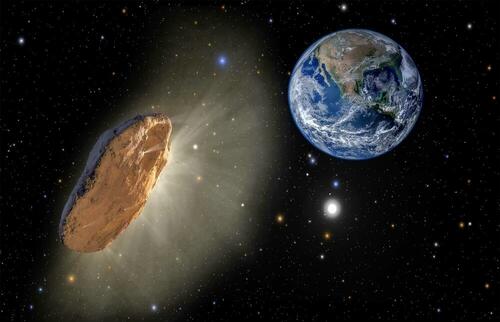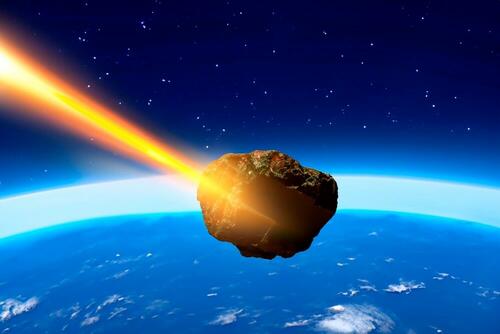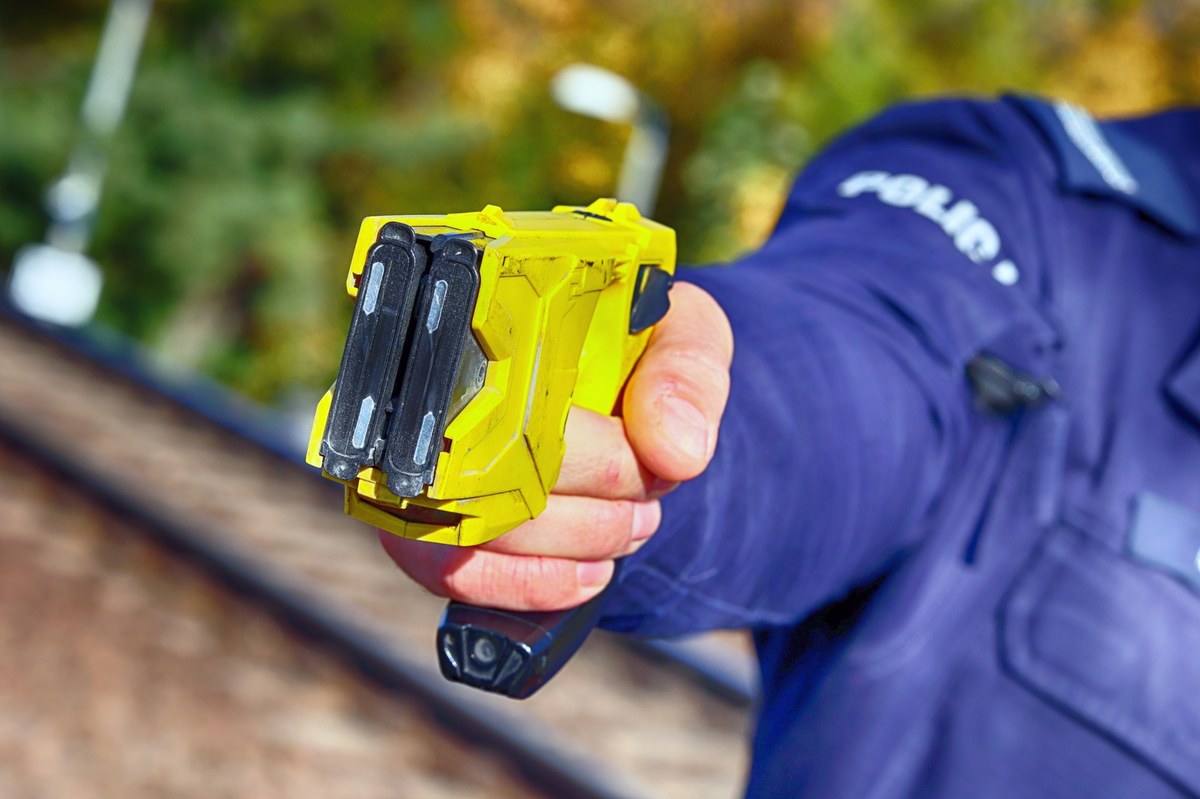
Предупреждение об астероиде в канун Рождества: 120 футов Космический рок движется к Земле
Виа Разум необузданный,
Рождество Приближается Ева, небо над ней обещает больше, чем мерцающие звезды и праздничное веселье. Массивный небесный посетитель, известный как «Астероид Рождества», мчится к Земле с поразительной скоростью.
В то время как НАСА внимательно следит за его подходом, размер и скорость этого космического камня вызвали восхищение и намек на беспокойство. Что делает это событие таким замечательным?
Может ли этот астероид представлять угрозу, или это просто мимолетный гость в космическом танце нашей Солнечной системы?

Астероид 2024 XN1: ключевые факты
Астероид 2024 XN1, обнаруженный 12 декабря 2024 года, должен приблизиться к Земле в канун Рождества. Измеряя от 95 до 230 футов в диаметре, что сопоставимо с 10-этажным зданием, этот небесный объект пройдет на расстоянии примерно 4,48 миллиона миль от нашей планеты, что примерно в 18 раз больше расстояния между Землей и Луной.
Путешествуя со скоростью 14 743 миль в час, 2024 XN1 был классифицирован НАСА как околоземный объект. Несмотря на эту классификацию, эксперты подтверждают отсутствие риска столкновения. Астроном Джесс Ли из Королевской Гринвичской обсерватории отмечает: «Он будет очень далеко, примерно в 18 раз дальше от Земли, чем Луна, и поэтому этот предсказанный путь не приблизится достаточно близко, чтобы ударить по Земле. "
Важность мониторинга таких астероидов подчеркивается историческими событиями, такими как Тунгусский взрыв в 1908 году, когда объект такого же размера нанес значительный ущерб Сибири. Это событие сгладило около 2000 квадратных километров леса, подчеркнув потенциальное воздействие околоземных объектов.
Возможные последствия и исторические сравнения

Хотя астероид 2024 XN1 находится на безопасной траектории, понимание потенциального воздействия таких небесных тел имеет решающее значение. Астероид такого размера диаметром от 95 до 230 футов может высвободить энергию, эквивалентную 12 миллионам тонн тротила, если он столкнется с Землей. Эта огромная сила может опустошить площадь около 700 квадратных миль, что подчеркивает важность мониторинга околоземных объектов.
Исторические события дают отрезвляющее представление о потенциальных последствиях ударов астероидов. Например, Тунгусское событие 1908 года включало объект диаметром около 120 футов, что сопоставимо с 2024 XN1. Этот взрыв произошел над землей и повалил 80 миллионов деревьев на обширной территории в Сибири.
Совсем недавно челябинский метеорит в 2013 году продемонстрировал разрушительный потенциал более мелких астероидов. Астероид шириной 66 футов взорвался в атмосфере над Челябинском, Россия, выпустив энергию, эквивалентную примерно 150 килотоннам тротила. Это событие нанесло значительный ущерб и привело к многочисленным травмам, подчеркнув необходимость бдительного мониторинга околоземных объектов.
Как отслеживает NASA Эти астероиды
НАСА использует комплексный подход для обнаружения, отслеживания и оценки околоземных объектов (NEO), таких как астероид 2024 XN1, обеспечивая планетарную безопасность с помощью передовых систем мониторинга и совместных усилий.
Одним из ключевых инструментов NASA является Астероидная наземная система последнего оповещения (ATLAS)Современная система обнаружения, способная сканировать все темное небо каждые 24 часа, может представлять опасность для Земли в будущем. Управляемый Институтом астрономии Гавайского университета для Координационного бюро планетарной обороны НАСА (PDCO), ATLAS повышает способность обнаруживать потенциальные угрозы заблаговременно.
Помимо ATLAS, NASA разработало прибытиеВысокоавтоматизированная система мониторинга столкновений, которая постоянно сканирует самый актуальный каталог астероидов на предмет возможностей будущего столкновения с Землей в течение следующих 100 лет. алгоритм следующего поколения, Вводная частьУлучшает оценку вероятностей воздействия NEA, позволяя более точные оценки риска.
NASA расширяет свои возможности по мониторингу с развитием Сюрвейер околоземных объектов (NEO Surveyor)Космический инфракрасный телескоп, предназначенный для обнаружения и характеристики большинства потенциально опасных астероидов диаметром более 140 метров. Планируемый к запуску в 2027 году, NEO Surveyor улучшит обнаружение астероидов, которые трудно наблюдать с помощью наземных телескопов, заполняя критический пробел в способности человечества обнаруживать потенциально опасные NEO.
Помимо обнаружения, НАСА протестировало методы изменения траектории потенциально опасных астероидов. The Тест двойного перенаправления астероидов (DART) Миссия, проведенная в 2022 году, успешно продемонстрировала способность изменять движение астероида в космосе посредством кинетического воздействия. Эта миссия стала важной вехой в планетарной обороне, продемонстрировав жизнеспособный метод защиты Земли от будущих астероидных угроз.
Благодаря этим сложным системам и миссиям НАСА продолжает улучшать свою способность контролировать и смягчать потенциальные угрозы астероидов, гарантируя, что такие объекты, как 2024 XN1, обнаруживаются и отслеживаются задолго до того, как они представляют какой-либо риск для Земли.
Почему это важно: тревожный звонок
Близкое сближение астероида 2024 XN1 служит убедительным напоминанием об уязвимости Земли к околоземным объектам. Хотя этот конкретный астероид не представляет непосредственной угрозы, его пролет подчеркивает критическую важность бдительного мониторинга и готовности.
Астероиды значительного размера могут нанести катастрофический ущерб при ударе. Исторические события, такие как Тунгусское событие 1908 года, демонстрируют разрушительные последствия столкновений астероидов. В этом случае взрыв астероида уничтожил около 2000 квадратных километров леса в Сибири. Аналогичным образом, челябинский метеор в 2013 году привел к широкомасштабным повреждениям и травмам. Эти инциденты подчеркивают необходимость принятия упреждающих мер по выявлению и смягчению потенциальных угроз.

НАСА находится на переднем крае разработки технологий для устранения рисков, связанных с ОСЗ. Миссия Double Asteroid Redirection Test (DART), проведенная в 2022 году, успешно продемонстрировала способность изменять траекторию астероида посредством кинетического воздействия. Эта миссия стала важной вехой в планетарной обороне, продемонстрировав жизнеспособный метод защиты Земли от будущих астероидных угроз.
По состоянию на декабрь 2024 года Координационное управление планетарной обороны НАСА сообщает об обнаружении почти 28 000 околоземных астероидов, причем новые открытия происходят со скоростью около 3000 в год. Это постоянное наблюдение имеет решающее значение для раннего выявления и оценки рисков, что позволяет своевременно осуществлять стратегии смягчения последствий.
Пролет астероида 2024 XN1 не следует рассматривать как простое астрономическое событие. Вместо этого она должна активизировать глобальные усилия по укреплению нашего потенциала планетарной обороны. Инвестирование в передовые системы обнаружения, проведение оценки рисков воздействия и разработка технологий отклонения являются важными шагами для защиты нашей планеты от потенциальных будущих угроз.
Небесное напоминание о безопасности Земли
Рождество Астероид Ева, 2024 XN1, напоминает нам о тонком балансе, который поддерживает Земля в огромном и непредсказуемом космосе. В то время как его подход является безвредным зрелищем на этот раз, потенциальное опустошение, которое могут вызвать такие объекты, является суровым напоминанием об уязвимости нашей планеты. Такие события, как Тунгусский взрыв и Челябинский метеор, подчеркивают, почему бдительный мониторинг и инвестиции в стратегии планетарной обороны не подлежат обсуждению в будущем.
По мере того, как мы удивляемся чудесам Вселенной, крайне важно признать важность усилий НАСА и других космических агентств по защите человечества. Успех таких миссий, как DART, показывает, что у нас есть инструменты для подготовки к потенциальным угрозам. Однако это требует глобального сотрудничества, продолжения исследований и усовершенствования систем обнаружения.
Астероид 2024 XN1 пройдет без происшествий в канун Рождества, но он дает нам ценный урок: космос - это динамичная, постоянно меняющаяся арена, и быть готовым к ней очень важно. По словам известного астронома Джесс Ли, «Вселенная постоянно напоминает нам о своей обширности и непредсказуемости. Мы должны уважать и адаптироваться к этому. "
Тайлер Дерден
Туэ, 12/24/2024 - 22:45










